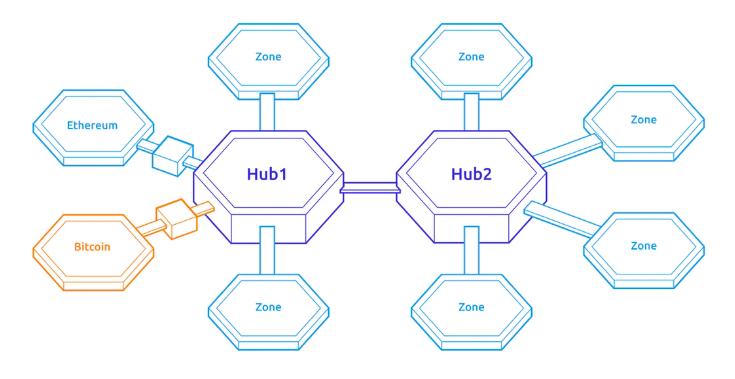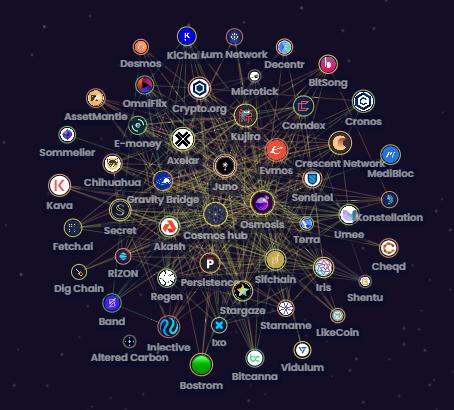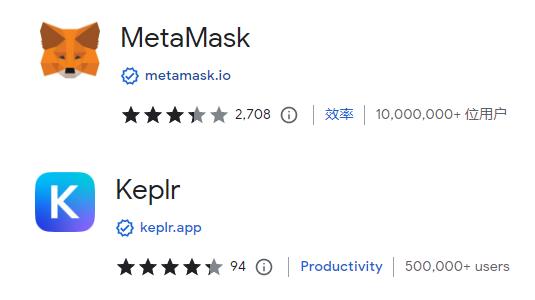The ATOM 2.0 white paper is about to be released, can the value capture capability of Cosmos be improved?
On September 26th, Tendermint, the developer of Cosmos, released the white paper of the ATOM 2.0 version at the Cosmoverse conference, and discussed the Atom 2.0 topic and its impact on Cosmos and interchain. This is undoubtedly an important step forward for the Cosmos ecosystem.
According to the official roadmap, in the next 2022 Q4 and 2023 Q1, Cosmos will launch Interchain Accounts and Interchain Security respectively. These functional modules will lead the Cosmos network to new heights. This series of actions shows that in the fierce public chain competition, Cosmos is not to be outdone.
After years of construction of the Cosmos ecosystem, many excellent public chains have chosen the Cosmos SDK as the underlying technology, including BNB Chain, Thorchain, Oasis, Okchain, Terra, Osmosis, Cronos, etc., of which 49 blockchains have been linked to the IBC ecosystem.
At the same time, the recognition from the outside world has fully proved this point. Delphi Labs will continue to build around Cosmos in the future, and the V4 version of dydx will run on Cosmos.
- How Blockchain Is Impacting Online Poker
- Canada Overtakes U.S. in Percentage of Cryptocurrency Investors
- Viewpoint | How will bitcoin prices react when US companies reopen?
So why hasn’t Atom been as hot as ETH over the years? Will its value capture capability be improved after ATOM 2.0? This article will introduce the reasons for the ATOM 2.0 upgrade and discuss the differences between the two ecosystems, Cosmos and Ethereum .
Where is the value of ATOM?
The Internet acts as a bridge, allowing computers that were originally isolated islands to achieve interconnection. Now, each public chain is like a separate computer, and Cosmos believes that their IBC protocol may become the TCP/IP protocol of the blockchain world in the future. The architecture of the Cosmos ecosystem is Hub and Zone.

Hub and Zone in Cosmos
To this end, Cosmos has built the Cosmos SDK, a modular framework that allows developers to easily build application-specific blockchains. Important basic modules include:
- IBC (Inter Blockchain Communication): Standardize cross-chain information, responsible for reliable transmission, authentication and data sorting.
- ICA (Interchain Account): Cross-chain accounts can control the behavior of on-chain accounts on another chain. Assets are moved through cross-chain accounts, and users do not need to operate back and forth on multiple product interfaces.
- ICS (Interchain Security): Cross-chain security is similar to Polkadot’s shared security model, allowing validators on one blockchain to produce blocks and maintain the security of the other chain.
As the native token of the first Hub in the Cosmos ecosystem, ATOM has been criticized for its ability to capture value. The value capture ability represents the income of the token holder to the growth of the entire ecological value. This standard is not limited to the evaluation of public chains, exchanges, application protocols, etc. For example, BNB, SNX and other tokens have a very strong value capture ability, and holders not only enjoy the benefits of price increases, but also get additional benefits along with ecological development. In this regard, ATOM has two drawbacks due to the original architecture and token economics.
First, the Cosmos SDK is an open-source technology, and most Hubs and Zones built on this technology do not require ATOM. The Cosmos Hub itself has no application, and ATOM tokens are only required for transactions and pledges on the Cosmos Hub.
Second, ATOM 1.0 is highly inflationary, with an inflation floor of 7% and a ceiling of 20%. If the staking rate is below 66%, inflation will start heading towards 20%, whereas if the staking rate is much higher than 66%, inflation will drop to 7%.
Therefore, ATOM holders want to gain income in the Cosmos ecosystem only by staking to the network, but the value of the token remains stagnant due to the high inflation rate. In addition, the new public chain in the ecosystem will airdrop ATOM pledgers, but for holders, this is also an unpredictable investment strategy.
High inflation is helpful in the early stages of network development, incentivizing more users to stake to maintain network operation. But now the multi-chain ecology has emerged, and the blockchain needs not only network stability, but also the ability to complete token exchange. ATOM pushes version 2.0 to address the pain point of value capture.
Solutions for ATOM 2.0
Ethan Buchman, the co-founder of Tendermint and Cosmos, revealed in an AMA that ATOM 2.0 will allow the Cosmos Hub to play a role in cross-chains, making cross-chains easier to access and achieve large-scale applications. The new white paper includes economic models, a lot of research in the DeFi field over the past few years, and aspects such as Protocol Controlled Value.
Specifically, Cosmos should also adjust the inflation rate of the token, such as setting the inflation rate online or changing it to a fixed inflation rate according to the built-in controller, and will not adjust it according to the number of users’ pledges.
In terms of token incentives, Cosmos utilizes the Protocol Controlled Value (PCV) mechanism to incentivize other behavioral activities across the chain. The object of incentive adjustment also includes the community, which will be given to the community through a one-time subsidy, or the establishment of developer capital flow. The new version of the token model is committed to making it better to provide services and advice to other aspects of the ecosystem.
In terms of fee mechanism, a burning function similar to Ethereum’s EIP1559 may be introduced to ATOM. There are also a variety of tokens with different fees to achieve direct airdrops on the Hub.
Regardless of the specific content of the white paper of ATOM 2.0, the direction of its reform is very correct, and ATOM 2.0 will provide new momentum for the entire Cosmos network.
Ethereum & Cosmos go the same way
Despite the data gap between Cosmos and Ethereum, Cosmos is the second largest ecosystem after Ethereum in terms of usability. The two are building a blockchain network that can host the next billion users.

The daily active addresses and transfer data of the public chains of the Ethereum and Cosmos ecosystems, source: Artemis.xyz
In terms of daily active addresses and transfers, BSC based on the Cosmos SDK is higher than Ethereum. Of course, the number of robots in the BSC network is also much higher than that of Ethereum, and there is some brushing data.
Omosis is slightly inferior to Arbitrum and Optimism, and the reason is most likely that Ethereum L2 has much more activity than Omosis. These data are enough to prove the availability of the Cosmos ecosystem.
Multi-chain architecture
Haseeb Qureshi, a partner of Dragonfly, once put forward the wonderful point of “every public chain is like a city”, which can help us understand the multi-chain ecology more vividly. Ethereum is like New York City with a lot of land, by building skyscrapers (L2) to accommodate more people. Cosmos is a huge highway system used to connect public chains like small towns in the ecosystem.
The multi-chain architecture of Ethereum is easy to understand from 2D to 3D, and there is always the Ethereum main chain as a connection point. Cosmos has been known for its abstraction since its birth, and its multi-chain existence is 3D. Before the launch of IBC, the public chains built on the basis of the Cosmos SDK did not have much intersection. Imagine that the various public chains of the Cosmos ecosystem are like paradises with different themes, including aerial, underground, or divided into entertainment, sports, and learning according to categories… Since the completion of the IBC highway, the users in them have only Access to other theme parks.
Cross-chain security mainly serves the developers of theme parks. They no longer need to spend a lot of money to hire security guards and configure security facilities for the park. Instead, they apply to the Cosmos Hub and pay/pledge ATOM to complete the security work of the public chain. This greatly helps web3 builders with ideas, and makes the Cosmos ecosystem more open and fair.
Cross-chain accounts are available to all users of the Cosmos ecosystem, allowing users to implement complex cross-chain operations without the need for cumbersome cross-chain processes. Just like you are visiting the zoo but suddenly want to eat a certain dish in the food city, the cross-chain account will allow you to taste the food from afar without leaving the place. This turned out to be like a teleport function, an unimaginable cross-chain experience, Amazing!
DeFi race
Benefiting from a large developer community, Ethereum is the center of blockchain innovation. Along the way, whether it is ICO, DeFi Summer, NFT or future SBT, L3 and other concepts, Ethereum is leading the development direction of blockchain. In the past year, Cosmos has adopted the strategy of “take the essence and take the dross” to quickly and efficiently build a DeFi ecosystem.

According to the data of map of zones, Cosmos currently has 49 public chains, and the daily transfer of funds through IBC is about 10 million US dollars. These are important DeFi infrastructures in the Cosmos ecosystem.
- Osmosis: A network that supports developers to develop cross-chain AMMs, and is also the largest DEX in the Cosmos ecosystem.
- Axelar: Connects all blockchain networks, assets and programs in the ecosystem through a common set of protocols and APIs, designed to support developers building multi-chain dApps.
- Juno: An access-free smart contract deployment platform, developers can easily build smart contract applications of any function on the network, and can communicate with other public chains that integrate IBC in the ecosystem.
- Kujira: As the center of the Cosmos ecological high-quality project, by making the application only deploy on it after the governance vote is successful. In addition, the network has developed an on-chain order book exchange, a liquidation collateral market, and the overcollateralized stablecoin USK.
- Celestia: A project focused on building a modular blockchain network that greatly improves scalability by separating the consensus layer, execution layer, and data availability layer of the blockchain.
- Sei Network: is a blockchain dedicated to DeFi built using the Cosmos SDK. The goal of this project is to make Sei the best environment for DeFi applications. Its unique features include front-run protection and a built-in order matching engine.
- Crescent (formerly Gravity DEX) : Multi-chain assets provide a capital-efficient liquidity incentive market.
- Evmos: Interoperable with Ethereum mainnet, EVM compatible environments and other BFT chains via IBC, and will be used as an EVM Hub for any other EVM Cosmos chain. Evmos aims to be the EVM hub for Cosmos, allowing EVM smart contracts to be easily deployed and communicated within the Cosmos ecosystem.
- Agoric: An application chain using the JavaScript language , dedicated to bringing 12 million JavaScript developers into the crypto space.
- Sommelier: Co-processor for DeFi traders and liquidity providers to dynamically optimize investment strategies on-chain.
Challenges and bottlenecks
Compared with Ethereum’s DeFi ecosystem, Cosmos still has several development bottlenecks, which are also challenges that the Cosmos ecosystem must face at present.
First of all, due to the uniqueness of the blockchain structure, it is difficult for Cosmos to interact with blockchains outside the ecosystem, and currently relies on several protocols such as Evmos and Axelar. This may be the main reason why the Cosmos ecological stablecoin is completely at a disadvantage . Centralized stablecoin issuers Tether, Circle and other companies have not issued native stablecoins on the Cosmos network. The Cosmos ecological verification node Swiss Staking once stated on its social platform that Circle would issue native USDC on Osmosis, but Circle officials did not respond.
The current plan is that the three stablecoins USDT/USDC/DAI enter the Cosmos ecosystem through 5 different cross-chain bridges, and generate 15 different formats of mapping tokens, resulting in extremely scattered liquidity of the stablecoins. At the same time, the Terra-based UST failed to sustain the stable currency utility of the Cosmos ecosystem. The new generation of stable currency protocols such as IST, NOTE, and USDX will take time to test.
The encrypted wallet is also the first infrastructure for users to enter the blockchain ecosystem, and its importance is self-evident. Ethereum’s most popular Metamask wallet is the wallet of choice for most crypto users due to its first-mover advantage and the network effect of EVM, with 30 million active users in March this year. At the same time, the Cosmos mainstream wallet Keplr just reached the milestone of 500,000 users.

Data from Chrome plugin download page
Finally, the Cosmos community is often thought of as a “bulk” multichain community. The open-source and decentralized inter-chain architecture, multi-entity participation in management, and infighting among co-founders make each public chain in the Cosmos ecosystem stand on top of each other, and even warlord melees often break out. Among them, the founder of Cosmos is familiar to crypto users. Man Jae Kwon took a hostile approach to Proposition 69. IBC can connect blockchains, but not people.
Excessive decentralization will be a prelude to summoning the devil. Due to the lack of souls like Vitalk, the universe is even more divided under major resolutions. At the same time, it will also spawn extreme fanatics like Do Kwon. He used 20% APR to induce the support of neutral users in the community, and finally wiped out the wealth of 60 billion US dollars, causing irreparable damage to the ecology.
write at the end
On the Wanxiang Blockchain that ended not long ago, Xiao Feng, chairman of Wanxiang, said that the application layer protocol of the blockchain will usher in a big explosion. Cosmos focuses on the blockchain ecology of the application chain. In this most important multi-chain period, Cosmos Hub released the ATOM 2.0 white paper, indicating that ATOM will provide new momentum for this old public chain.
However, in terms of technical implementation, Cosmos has the same history of delay as most public chains. The previous IBC module has been repeatedly delayed due to resource mismatch, so what is the progress of the much-anticipated inter-chain security and inter-chain accounts?
The competition of today’s public chains has undergone earth-shaking changes, and high-performance parallel public chains such as Aptos and Sui may also become powerful challengers to Cosmos. In the new competitive cycle, Cosmos will need more cutting-edge narratives and more solid ecological progress to maintain its top position.
References:
1. The Way of the Metaverse: “The Latest Focus of Cosmos Ecology: Interchain Security (ICS), Atom 2.0 and Nomic”
2. SevenUp DAO: “Cosmos Ecological Opportunities and Inter-chain Finality Prospects under the New Industry Narrative”
3. Atomic gathering place: “Inter-chain security of cosmos ecology (ATOM2.0)”
We will continue to update Blocking; if you have any questions or suggestions, please contact us!
Was this article helpful?
93 out of 132 found this helpful
Related articles
- Market analysis: bearish pattern continues, BTC may test $ 5800
- CITIC Securities Research: What are the deep meanings behind the central bank's digital currency acceleration?
- DeFi total market value returns to 1 billion US dollars, new DeFi agreement surges
- Introduction | Reflective Bonds: The New Building Block of Ethereum DeFi Ecology
- Leading the country! Haidian District applies blockchain technology to administrative approval
- The first application scenario of the central bank's digital currency is implemented, and the "digital wallet" will be used as a payment channel
- Under the epidemic, the transformation and accelerated development of the blockchain industrial park
